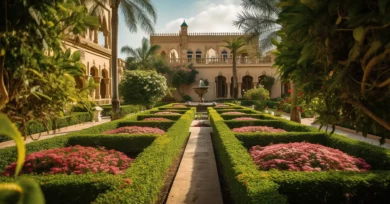Hello, my wonderful readers! Welcome to our exploration of Asia, a continent steeped in rich history and cultural diversity. In this blog, we journeyed through the vibrant tapestry of Asia’s past and present, uncovering its captivating stories and highlighting its best experiences.
Asia, the largest continent on Earth, is a treasure trove of civilizations that have shaped human history for millennia. From the ancient civilizations of Mesopotamia and the Indus Valley to the modern powerhouses of China and Japan, Asia’s history is as varied as it is fascinating. Through our articles, we aim to delve into the depths of these histories, shedding light on the triumphs, challenges, and enduring legacies that define each region.
But our exploration doesn’t stop with the past. Asia is also a dynamic and bustling activity hub, offering many experiences for travelers and enthusiasts alike. Whether you’re seeking breathtaking natural landscapes, mouthwatering cuisine, or immersive cultural encounters, Asia has something to offer everyone. From the bustling streets of Tokyo to the serene beaches of Bali, we’ll guide you through the best things to see, do, and experience across the continent.
Join us as we uncover the wonders of Asia, where history meets adventure in every corner.
The Rich Tapestry of Asia’s History
Asia, the world’s largest and most populous continent, boasts a history as diverse and multifaceted as its landscapes. From the dawn of civilization to the modern age, Asia has been a crucible of human development, innovation, and cultural exchange. In exploring Asia’s rich history, we delve into the key epochs and civilizations that have shaped the continent’s past and continue to influence its present.
Ancient Civilizations: Foundations of Asia’s History
The roots of Asia’s history can be traced back to the dawn of civilization, with the emergence of ancient societies along the fertile river valleys of Mesopotamia, the Indus, and the Yellow River. These early civilizations, including the Sumerians, the Harappans, and the Shang Dynasty, laid the groundwork for developing complex urban centers, writing systems, and sophisticated agricultural techniques. Their legacy continues to resonate across Asia and beyond, shaping human history.
The Rise and Fall of Empires: From Persia to the Mongols
As millennia passed, Asia witnessed the rise and fall of mighty empires that left an indelible mark on the continent’s landscape. From the expansive Persian Empire under Cyrus the Great to the formidable Mauryan Empire of ancient India, Asia’s empires forged vast realms of power and influence, fostering trade, scholarship, and cultural exchange.
The spread of Buddhism from India to East Asia during Emperor Ashoka’s reign exemplifies these empires’ profound impact on the region’s religious and philosophical landscape. Similarly, the conquests of Alexander the Great brought Greek influence to the doorstep of the Indian subcontinent, laying the groundwork for the fusion of Hellenistic and indigenous cultures in the region.
Under the leadership of Genghis Khan and his successors, the Mongol Empire emerged as one of the largest contiguous land empires in history, stretching from Eastern Europe to the Korean Peninsula. The Mongols facilitated the exchange of goods, ideas, and technologies along the fabled Silk Road, connecting the civilizations of Europe and Asia in unprecedented ways.
The Age of Exploration: Trade, Conquest, and Cultural Exchange
The dawn of the age of exploration brought European powers to Asia’s shores for wealth, glory, and new trade routes. The Portuguese, led by Vasco da Gama, established maritime trade networks that linked Asia with Europe, laying the foundation for centuries of global trade and exchange.
The arrival of European colonial powers, including the Dutch, Spanish, British, and French, heralded a new era of conquest and exploitation in Asia. The Portuguese established trading posts in Goa, Macau, and Malacca. At the same time, the British East India Company gained control over vast territories in India, laying the groundwork for British colonial rule on the subcontinent.
Modern Asia: Independence, Conflict, and Globalization
The 20th century witnessed profound changes in Asia’s political and social landscape as colonial empires crumbled and new nation-states emerged. The struggle for independence, led by figures such as Mahatma Gandhi in India and Ho Chi Minh in Vietnam, reshaped the contours of power in the region, ushering in an era of decolonization and self-determination.
However, the post-colonial period also brought its share of challenges, including regional conflicts, authoritarian regimes, and the legacy of imperialism. The partition of India and Pakistan in 1947, followed by decades of tension and conflict, underscores the complexities of nation-building in a diverse and fragmented region.
In recent decades, Asia has emerged as a global economic powerhouse, driving innovation, trade, and investment on a scale unseen in human history. The rapid industrialization of countries such as China, Japan, and South Korea has transformed the region’s economic landscape, posing new challenges related to environmental sustainability, labor rights, and income inequality.
Continuity and Change in Asia’s History
Asia’s history is a testament to the enduring resilience of its peoples, cultures, and civilizations in the face of adversity and change. From the ancient civilizations of Mesopotamia and the Indus Valley to the modern metropolises of Tokyo and Shanghai, Asia’s past profoundly shapes its present and future.
As we navigate the complexities of Asia’s history, we must recognize the diversity of experiences, perspectives, and voices that have contributed to the continent’s rich tapestry. We can forge a brighter future for Asia and the world by embracing this diversity and fostering dialogue and understanding.
Places to Visit and Things to Do in Asia
Asia, a continent of boundless diversity and cultural richness, offers many experiences for travelers seeking adventure, relaxation, and discovery. From ancient landmarks to modern marvels, Asia’s tapestry of destinations beckons visitors with its enchanting beauty and captivating history. In exploring places to visit and things to do in Asia, we journeyed through some of the region’s most iconic and awe-inspiring locations.
Historical Marvels: Exploring Ancient Landmarks
Asia is home to some of the world’s most remarkable historical sites, each bearing witness to the continent’s rich and storied past. From the majestic temples of Angkor Wat in Cambodia to the Great Wall of China, these ancient landmarks offer a glimpse into the civilizations that once thrived in the region.
- Angkor Wat, Cambodia: Built in the 12th century, Angkor Wat is the largest religious monument in the world, showcasing the architectural and artistic achievements of the Khmer Empire. Visitors can explore its intricate carvings, towering spires, and serene courtyards, immersing themselves in Southeast Asia’s spiritual and cultural heritage.
- The Great Wall of China: Stretching over 13,000 miles across northern China, the Great Wall is a testament to the ingenuity and perseverance of ancient Chinese civilizations. Travelers can hike along its rugged terrain, marvel at its panoramic vistas, and explore the watchtowers and fortresses that dot its length, gaining insight into China’s millennia-old history of defense and fortification.
Natural Wonders: Discovering Asia’s Breathtaking Landscapes
Asia boasts an array of natural wonders, from lush rainforests and pristine beaches to towering mountains and cascading waterfalls. Whether seeking adventure or tranquility, travelers can find solace and inspiration in the continent’s diverse and breathtaking landscapes.
- Halong Bay, Vietnam: Renowned for its emerald waters and towering limestone islands, Halong Bay is a UNESCO World Heritage Site and a haven for kayaking, sailing, and cave exploration. Visitors can cruise among its picturesque islets, marvel at its stunning sunsets, and immerse themselves in the tranquility of one of Asia’s most iconic natural wonders.
- Mount Everest, Nepal/Tibet: Towering at 29,029 feet above sea level, Mount Everest is the highest peak on Earth and a mecca for mountaineers and adventurers from around the globe. While reaching the summit is a feat reserved for the most experienced climbers, travelers can embark on treks to Everest Base Camp, where they can witness the majesty of the Himalayas up close and personal.
Cultural Experiences: Immersing Yourself in Asia’s Vibrant Traditions
Asia’s cultural heritage is as diverse as it is rich, encompassing a tapestry of traditions, rituals, and artistic expressions passed down through generations. From traditional festivals and ceremonies to immersive cultural encounters, travelers can immerse themselves in Asia’s vibrant heritage’s sights, sounds, and flavors.
- Kyoto, Japan: With its centuries-old temples, serene gardens, and elegant tea houses, Kyoto is a living testament to Japan’s rich cultural heritage. Visitors can explore historic neighborhoods such as Gion and Higashiyama, participate in traditional tea ceremonies, witness the splendor of cherry blossom season, and experience the timeless beauty and grace of Japanese culture.
- Varanasi, India: Situated on the banks of the sacred Ganges River, Varanasi is one of the oldest continuously inhabited cities in the world and a spiritual epicenter for Hindus. Travelers can witness mesmerizing Ganga Aarti ceremonies, explore ancient temples and ghats, and immerse themselves in the vibrant colors and sounds of one of India’s most revered pilgrimage sites.
Culinary Delights: Sampling Asia’s Flavors and Delicacies
A visit to Asia would only be complete with indulging in its rich and diverse culinary offerings, which reflect the region’s cultural heritage and culinary traditions. From street food stalls to Michelin-starred restaurants, Asia’s gastronomic landscape is a feast for the senses, offering a tantalizing array of flavors, textures, and aromas to delight the palate.
- Bangkok, Thailand: Known as the “food capital of the world,” Bangkok is a culinary paradise brimming with street food vendors, bustling markets, and world-class restaurants. Travelers can savor iconic dishes such as pad Thai, tom yum soup, and green curry and indulge in delicacies like fried insects and durian fruit, experiencing Thai cuisine’s vibrant flavors and aromas.
- Seoul, South Korea: Renowned for its diverse and flavorful cuisine, Seoul offers a tantalizing array of dishes that showcase the unique flavors and ingredients of Korean cooking. From sizzling barbecue and savory pancakes to spicy kimchi and refreshing bingsu desserts, travelers can embark on a culinary journey through the bustling streets and lively markets of one of Asia’s most dynamic food destinations.
Embracing the Spirit of Adventure in Asia
Asia offers many experiences for travelers seeking adventure, cultural enrichment, and culinary delights. Whether exploring ancient landmarks, discovering natural wonders, immersing oneself in vibrant cultural traditions, or sampling flavors, Asia’s diverse and dynamic destinations never fail to inspire and captivate. So pack your bags, embark on an Asian adventure, and discover the wonders that await in this captivating continent.
Conclusion
Asia is a beacon of cultural richness, historical significance, and boundless adventure. Asia’s allure is undeniable, from the ancient civilizations that laid the foundations of human history to the modern marvels that define its landscapes. Through our exploration of its history and the best things to do here, we’ve uncovered a tapestry of experiences that beckon travelers from around the globe.
Whether tracing the footsteps of emperors along the Great Wall of China, immersing oneself in the tranquility of Halong Bay’s emerald waters, or indulging in the vibrant flavors of Bangkok’s street food stalls, Asia offers something for every adventurer, culture enthusiast, and culinary connoisseur.
But beyond its breathtaking landscapes and iconic landmarks, Asia’s greatest treasure lies in its people – resilient, diverse, and endlessly welcoming. It’s in the bustling markets of Delhi, the serene temples of Kyoto, and the warm smiles of locals in every corner of the continent that the true spirit of Asia shines brightest.
So, as you embark on your journey through Asia, may you be inspired by its history, enchanted by its beauty, and forever enriched by the unforgettable experiences that await you here. Asia awaits, ready to capture your heart and ignite your wonder like nowhere else on Earth.
Also Read:






